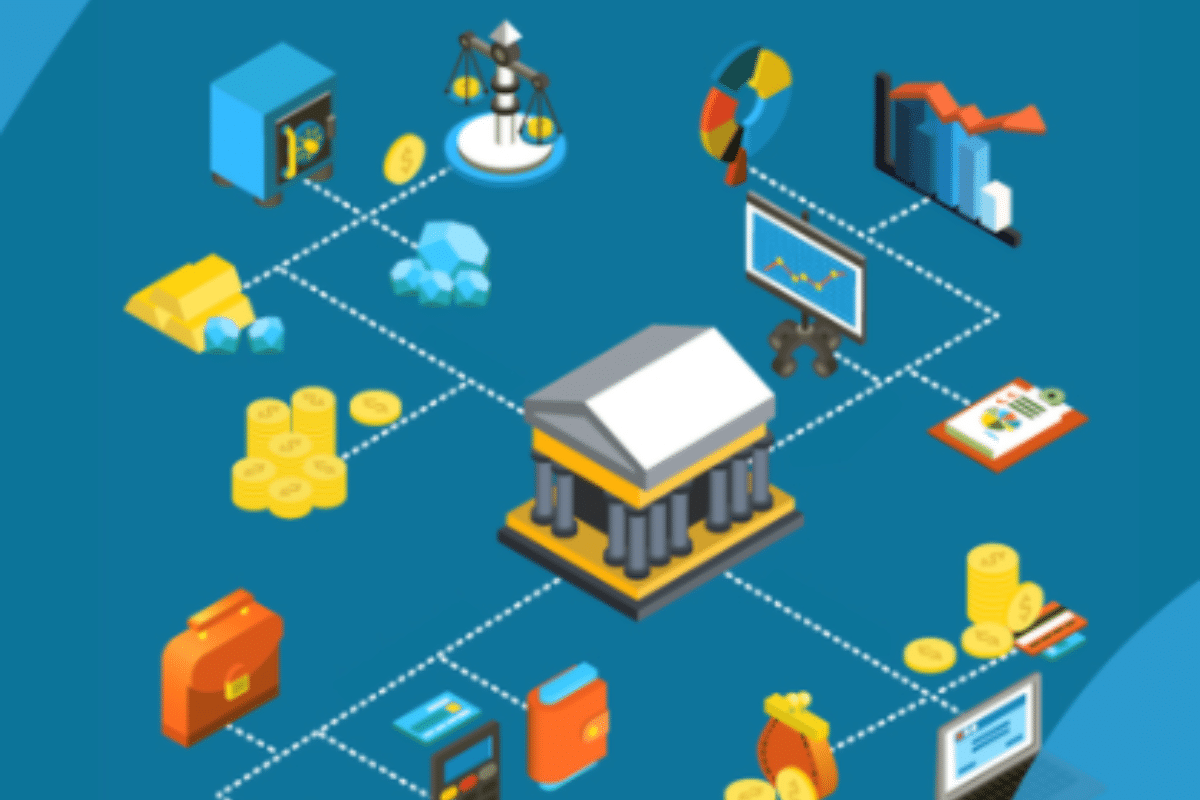Open Banking in Canada: Everything You Need to Know in 2023
By Selin Oguz | Published on 05 Apr 2023

Are you curious about the latest developments in the Canadian financial world? Look no further!
Open banking is quickly becoming a hot topic in Canada, and it’s important to understand what it is, how it works, and what it means for you. In this article, we’ll take a deep dive into everything you need to know about open banking in Canada in 2023. Let’s get started.
What is open banking?
Open banking refers to a set of financial industry practices that allow customers to share their financial data securely with third-party providers using open Application Programming Interfaces (APIs). This enables these third-party providers, such as fintech companies and other financial institutions, to access and use this customer data to provide innovative financial products and services to consumers.
In an open banking system, consumers have greater control over their financial data and can choose to share it with institutions that offer products or services they may be interested in. This is meant to lead to greater competition and innovation in the financial industry, as well as lower costs, more personalized services and easier money management for customers.
State of open banking in Canada in 2023
Canada has not yet implemented a nationwide open banking system, but there have been discussions and initiatives to explore the potential benefits and challenges of such a system since 2018. As of 2023, Abraham Tachjian is Canada’s open banking lead on the federal level, and many people in the industry agree that the implementation of open banking is fast approaching, which is very exciting!
With the prospect of open banking in Canada being around the corner, many of the big banks already have senior roles that are tasked with open banking-related matters. With job titles along the lines of “Vice President of Open Banking” already in place, it’s needless to say that the financial sector is ready to embrace open banking with open arms.
While financial organizations and consumers alike wait for announcements on when open banking will come into effect, let’s go over a few things that we can anticipate with its implementation in Canada.
– Based on a government announcement, open banking will be optional for Canadian credit unions. This is because open banking implementation will come at a federal level, and credit unions are provincially regulated.
– Investment accounts may not be covered by the open banking system.
– While the federal advisory committee had mentioned January 2023 as a potential implementation date, this did not happen. Now, implementation is expected sometime within 2023, although many are less hopeful since the 2023 federal budget did not include a statement on open banking.
– With federal regulations in place, open banking will be safe for Canadians and provide many benefits.
– Open banking will be very different and more effective than screen scraping, which we will cover in detail in an upcoming section.
Open banking partnerships in Canada
While some banks are waiting for federal open banking regulations to come into effect in Canada, others have already taken steps to make their APIs available through private fintech companies. Take it as private open banking, if you will.
While these developments are happening, it is worth noting that most of these efforts are still in their infancy. To explore further, however, here are some details about the private partnership announcements that have been made thus far in Canada.
National Bank: In September 2021, National Bank’s $103 million investment in Flinks, a Canadian fintech that develops APIs, is finalized. The transaction gives the bank more than 80% equity in the company. By November 2021, Flinks and National Bank launch an “open banking environment” in which certain fintech start-ups can access National Bank consumer data through APIs.
Royal Bank of Canada (RBC): In June 2022, RBC announces data access agreements with two U.S. firms, Yodlee and Plaid. This development gives RBC customers the ability to connect their financial data to thousands of apps and services through the use of APIs.
EQ Bank: In July 2022, EQ Bank also partners with Flinks to give their customers the chance to share their financial data securely with third-party fintech applications of their choosing.
CIBC: In August 2022, CIBC joins the others in private open banking by partnering with U.S. firm MX. As a result, CIBC clients can now securely share their financial information with fintech companies that partner with MX.
As a leader when it comes to adopting open banking in Canada, it’s clear to see that National Bank’s decision to open up its API through Flinks was a significant development in the open banking space in the country. By doing so, National Bank set a precedent and made it possible for third-party developers to access and use customer data even before a federal framework is announced.
Applications of open banking
The concept of open banking can be a bit difficult to understand without any context as to how it would affect your day-to-day life. To make things a bit clearer, here are a few potential applications of open banking in Canada and how they would apply to you as a consumer.
Budgeting and financial management apps
Open banking has the potential to revolutionize the way budgeting and financial management apps work. By leveraging this framework, fintech companies can access a wealth of data on a user’s financial transactions, including their income, expenses, and savings. This data can be used to provide personalized insights and recommendations to help users better manage their finances.
Financial apps, such as Hardbacon’s budgeting app, can also provide consumers with a more complete and up-to-date picture of their finances. By having all their accounts in one place, users can see where and how they spend their money, improving the accuracy and effectiveness of their budgeting and financial management efforts.
Assessments of creditworthiness
Traditionally, lenders have relied on credit reports and other financial data to evaluate a borrower’s creditworthiness. However, this approach has limitations as it only provides a snapshot of a borrower’s financial situation at a specific point in time.
With open banking, lenders can access a much broader range of financial data, including real-time transaction data, which provides a more comprehensive view of a borrower’s financial situation. This can enable lenders to make more accurate assessments of creditworthiness and offer more personalized loan products and terms to borrowers.
For borrowers, on the other hand, open banking can offer a number of benefits. Firstly, it can make it easier for them to access credit by enabling lenders to make faster, more accurate loan decisions, even for newcomers who may have a limited credit history. Additionally, it can enable borrowers to access more personalized loan products and terms, which can better meet their specific needs and financial circumstances.
Accounting software
Accounting on both a personal and business level can be a complex and long process. With open banking, however, accounting can be much simpler.
Once it’s implemented in Canada, accounting software could use open banking to access a user’s bank account data and automatically reconcile transactions, reducing the need for manual data entry and saving time. Additionally, open banking could enable accounting software to provide more detailed financial insights and recommendations, such as identifying areas where an individual or a business could cut costs or increase revenue.
Open banking can also make it easier for accounting software to facilitate payments and manage cash flow. By integrating with payment systems and other financial institutions, accounting software can provide users with a more streamlined and efficient payment process, reducing the risk of errors and delays.
Tax filing
Many people dread tax season. Once open banking is implemented in Canada, however, you could feel a whole lot better about it!
For individuals, open banking can make it easier to keep track of deductions and expenses. By automatically categorizing transactions and identifying potential deductions, open banking can help ensure that individuals are taking advantage of all available tax benefits. Additionally, open banking can provide more accurate and up-to-date financial reporting, reducing the risk of errors and making it easier to prepare tax returns.
For businesses, open banking can simplify tax reporting and compliance by providing access to real-time financial data. This can enable businesses to more accurately calculate tax liabilities and ensure that they are in compliance with all applicable tax laws and regulations. Additionally, open banking can streamline the process of reconciling financial data and generating financial reports, reducing the time and effort required to prepare tax returns.
Open banking vs. screen scraping
Open banking and screen scraping are two different approaches to accessing and sharing customer financial data. Currently, screen scraping is commonplace in Canada, whereas open banking is not yet implemented.
Screen scraping involves third-party providers such as Plaid, Flinks, MX, Finicity or Yodlee logging in to a customer’s bank account using their login credentials and “scraping” or copying the data from the screen. Most fintech start-ups in Canada currently use those providers in order to be able to connect to their user’s bank accounts.
This method is often unreliable and can fail to fetch accurate data due to changes in the bank’s website or other technical issues. Additionally, screen scraping raises security concerns as customers must share their login credentials with third-party providers.
In contrast, open banking allows customers to grant third-party providers access to their financial data through secure and standardized APIs. This gives customers more control over their data, as they can choose which data to share and revoke access at any time.
Open banking is also more reliable than screen scraping as it provides access to real-time data and eliminates the need for scraping or copying data from screens. It is also more secure as it uses advanced encryption and authentication measures to protect customer data and prevent unauthorized access.
Final thoughts on open banking in Canada
So there you have it, folks! Open banking is like a friendly little octopus that reaches out with its tentacles to connect your bank account with third-party apps and services, giving you more control over your financial life. While it’s still a relatively new concept in Canada, it’s definitely one to keep an eye on if you’re interested in taking your financial game to the next level!
